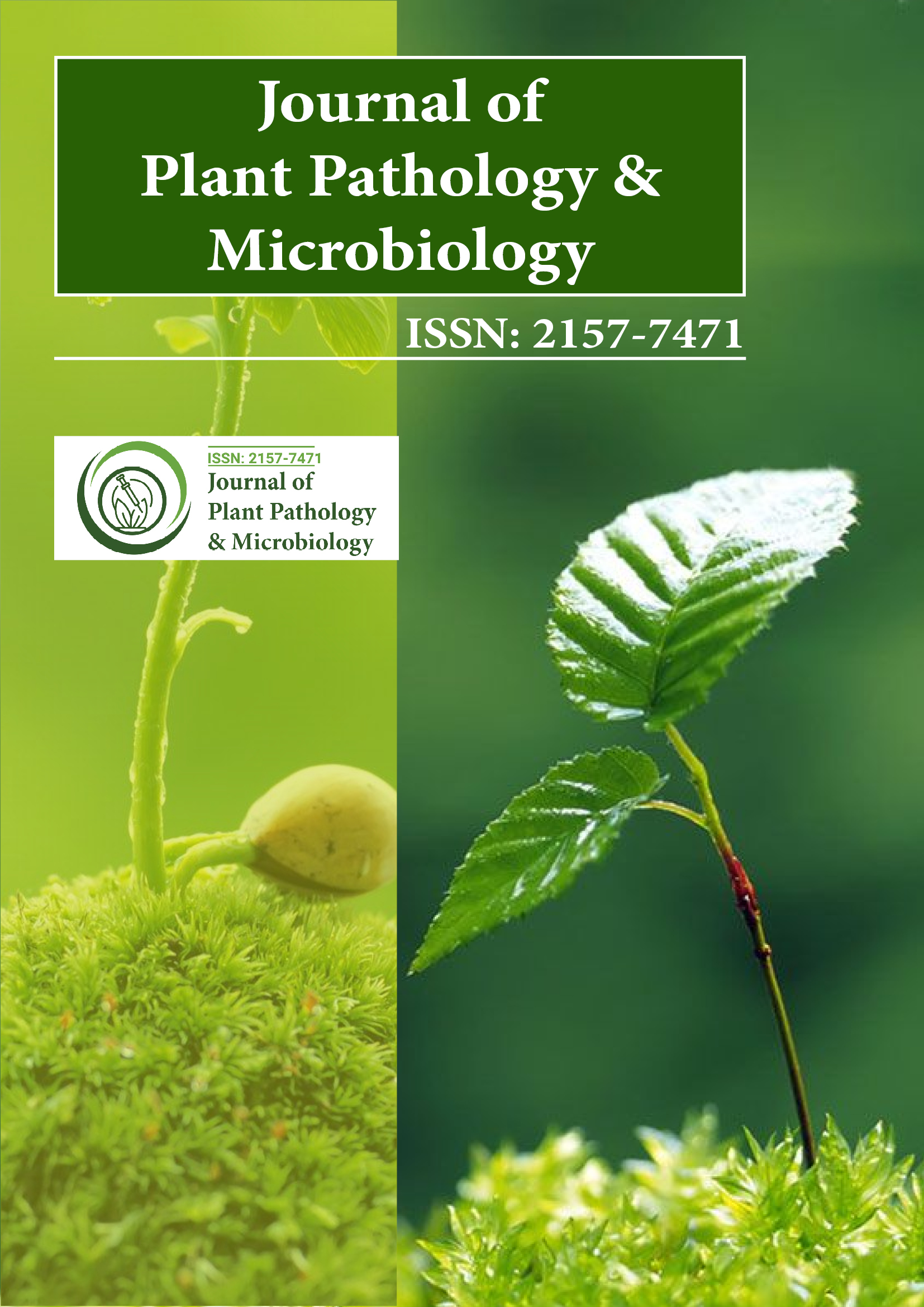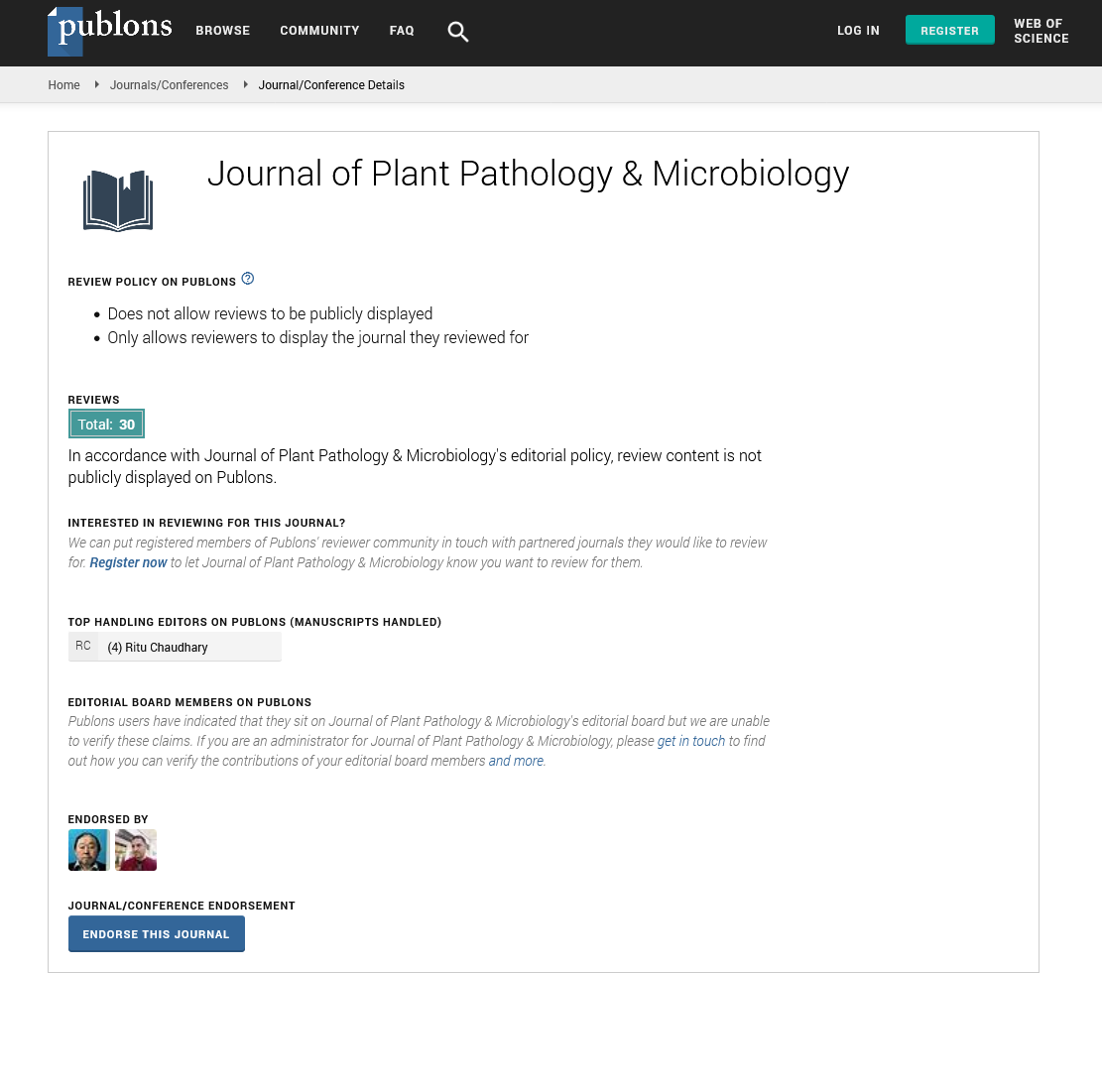Indexed In
- Open J Gate
- Genamics JournalSeek
- Academic Keys
- JournalTOCs
- CiteFactor
- Ulrich's Periodicals Directory
- Access to Global Online Research in Agriculture (AGORA)
- Electronic Journals Library
- Centre for Agriculture and Biosciences International (CABI)
- RefSeek
- Directory of Research Journal Indexing (DRJI)
- Hamdard University
- EBSCO A-Z
- OCLC- WorldCat
- Scholarsteer
- SWB online catalog
- Virtual Library of Biology (vifabio)
- Publons
- Geneva Foundation for Medical Education and Research
- Euro Pub
- Google Scholar
Useful Links
Share This Page
Journal Flyer

Open Access Journals
- Agri and Aquaculture
- Biochemistry
- Bioinformatics & Systems Biology
- Business & Management
- Chemistry
- Clinical Sciences
- Engineering
- Food & Nutrition
- General Science
- Genetics & Molecular Biology
- Immunology & Microbiology
- Medical Sciences
- Neuroscience & Psychology
- Nursing & Health Care
- Pharmaceutical Sciences
Short Communication - (2024) Volume 15, Issue 4
Advances in Understanding Plant-Pathogen Interactions: Implications for Sustainable Agriculture
Zoing Noise*Received: 28-Nov-2024, Manuscript No. JPPM-24-28281; Editor assigned: 02-Dec-2024, Pre QC No. JPPM-24-28281 (PQ); Reviewed: 16-Dec-2024, QC No. JPPM-24-28281; Revised: 23-Dec-2024, Manuscript No. JPPM-24-28281 (R); Published: 30-Dec-2024, DOI: 10.35248/2157-7471.24.15.736
Description
The relationship between plants and pathogens is a complex and dynamic interaction that plays a critical role in plant health crop productivity and food security. Advances in plant pathology over the years have provided deeper insights into these interactions shedding light on the intricacies of host defense mechanisms and pathogen strategies [1]. This evolving understanding has farreaching implications for sustainable agriculture offering pathways to develop environmentally friendly disease management strategies minimize the use of chemical inputs and enhance crop resilience [2].
Plant-pathogen interactions are influenced by the genetic makeup of both the plant and the pathogen. Pathogens including fungi bacteria viruses and nematodes have evolved mechanisms to infect plants and bypass their defenses [3]. In response plants have developed a sophisticated array of defense strategies to recognize and counteract pathogen attacks. These defenses can be broadly categorized into basal resistance and specific resistance. Basal resistance is a general defense mechanism activated against a wide range of pathogens and involves physical barriers like cell walls chemical responses such as the production of reactive oxygen species and the release of antimicrobial compounds. However pathogens often evolve to overcome these defenses necessitating more targeted responses from plants [4].
Specific resistance involves highly specialized defense mechanisms in which plants recognize pathogen-associated molecular patterns through pattern recognition receptors [5]. This process activates immune responses that include the expression of resistance genes which are essential in combating specific pathogens [6]. This evolutionary arms race between plants and pathogens drives the complexity of their interactions. Pathogens often deploy effector proteins to manipulate plant immune responses and plants in turn evolve to recognize these effectors resulting in an ongoing battle for survival [7].
Recent advances in molecular biology genomics and bioinformatics have significantly enhanced our understanding of plant immune responses [8]. The advent of sequencing technologies has enabled the identification of genes involved in plant immunity and revealed the molecular processes underlying pathogen recognition. The discovery of pattern-triggered immunity and effector-triggered immunity has been particularly transformative. While the former is activated by the detection of general pathogen-associated molecules the latter involves the recognition of specific pathogen effectors by resistance genes. These two forms of immunity often work synergistically to provide robust protection against pathogens [9].
Phytohormone also plays a critical role in plant defense. Hormones such as salicylic acid jasmonic acid and ethylene regulate plant immune responses in a finely tuned manner. Salicylic acid is primarily associated with defense against biographic pathogens that feed on living tissue while jasmonic acid and ethylene mediate responses to neurotropic pathogens that kill plant cells to extract nutrients. Understanding the molecular pathways that regulate these hormonal responses provides valuable insights into how plants balance their immune responses under different environmental and biological conditions [10].
The integration of molecular insights into plant-pathogen interactions has paved the way for novel approaches to disease management that align with the principles of sustainable agriculture. One promising strategy is the development of genetically resistant crops. Modern gene-editing tools particularly CRISPR-Cas9 have revolutionized this field by enabling precise modifications of resistance genes. By enhancing the expression of specific resistance genes or introducing new ones it is possible to produce crops that are inherently more resilient to diseases reducing the need for chemical interventions. Genetically modified crops such as bacterial blight-resistant rice and insectresistant cotton are examples of the potential of this approach.
Conclusion
Biological control which involves the use of beneficial microorganisms to suppress plant pathogens offers another sustainable alternative to chemical pesticides. Beneficial microbes including certain bacteria fungi and viruses can outcompete pathogens produce antimicrobial compounds or enhance plant immune responses. The use of these biological agents not only reduces the environmental impact of agriculture but also promotes soil and plant health. Traditional agricultural practices like crop rotation and diversification continue to play a major role in managing plant diseases. Crop rotation disrupts the life cycles of host-specific pathogens by alternating the types of crops grown in a particular field. Similarly intercropping reduces the likelihood of widespread pathogen outbreaks by diversifying the plant species present in a given area. These practices combined with modern scientific insights can create a more resilient agricultural system.
References
- Dodds PN, Rathjen JP. Plant immunity: towards an integrated view of plant–pathogen interactions. Nature Reviews Genetics. 2010;11(8):539-548.
[Crossref] [Google Scholar] [PubMed]
- Rojas CM, Senthil-Kumar M, Tzin V, Mysore KS. Regulation of primary plant metabolism during plant-pathogen interactions and its contribution to plant defense. Front Plant Sci. 2014;5:17.
[Crossref] [Google Scholar] [PubMed]
- Berger S, Sinha AK, Roitsch T. Plant physiology meets phytopathology: plant primary metabolism and plant–pathogen interactions. J Exp Bot. 2007;58(15-16):4019-4026.
[Crossref] [Google Scholar] [PubMed]
- Wang M, Gao L, Dong S, Sun Y, Shen Q. Role of silicon on plant–pathogen interactions. Front Plant Sci. 2017;8:701.
[Crossref] [Google Scholar] [PubMed]
- Parker IM, Gilbert GS. The evolutionary ecology of novel plant-pathogen interactions. Annu. Rev. Ecol. Evol. Syst. 2004;35(1):675-700.
- Velásquez AC, Castroverde CD, He SY. Plant–pathogen warfare under changing climate conditions. Curr Biol. 2018;28(10):R619-34.
[Crossref] [Google Scholar] [PubMed]
- Vinale F, Sivasithamparam K, Ghisalberti EL, Marra R, Woo SL, Lorito M. Trichoderma–plant–pathogen interactions. Soil Biol Biochem. 2008;40(1):1-10.
- Greenberg JT. Programmed cell death in plant-pathogen interactions. Annu Rev Plant Physiol Plant Mol Biol. 1997;48(1):525-545.
[Crossref] [Google Scholar] [PubMed]
- Leach JE, Leung H. Plant–pathogen interactions: disease resistance in modern agriculture. Trends Genet. 2013;29(4):233-240.
[Crossref] [Google Scholar] [PubMed]
- Nürnberger T. Signal perception in plant pathogen defense. Cell Mol Life Sci. 1999;55:167-182.
[Crossref] [Google Scholar] [PubMed]
Citation: Noise Z (2024). Advances in Understanding Plant-Pathogen Interactions: Implications for Sustainable Agriculture. J Plant Pathol Microbiol. 15:736.
Copyright: © 2024 Noise Z. This is an open access article distributed under the terms of the Creative Commons Attribution License, which permits unrestricted use, distribution, and reproduction in any medium, provided the original author and source are credited.

